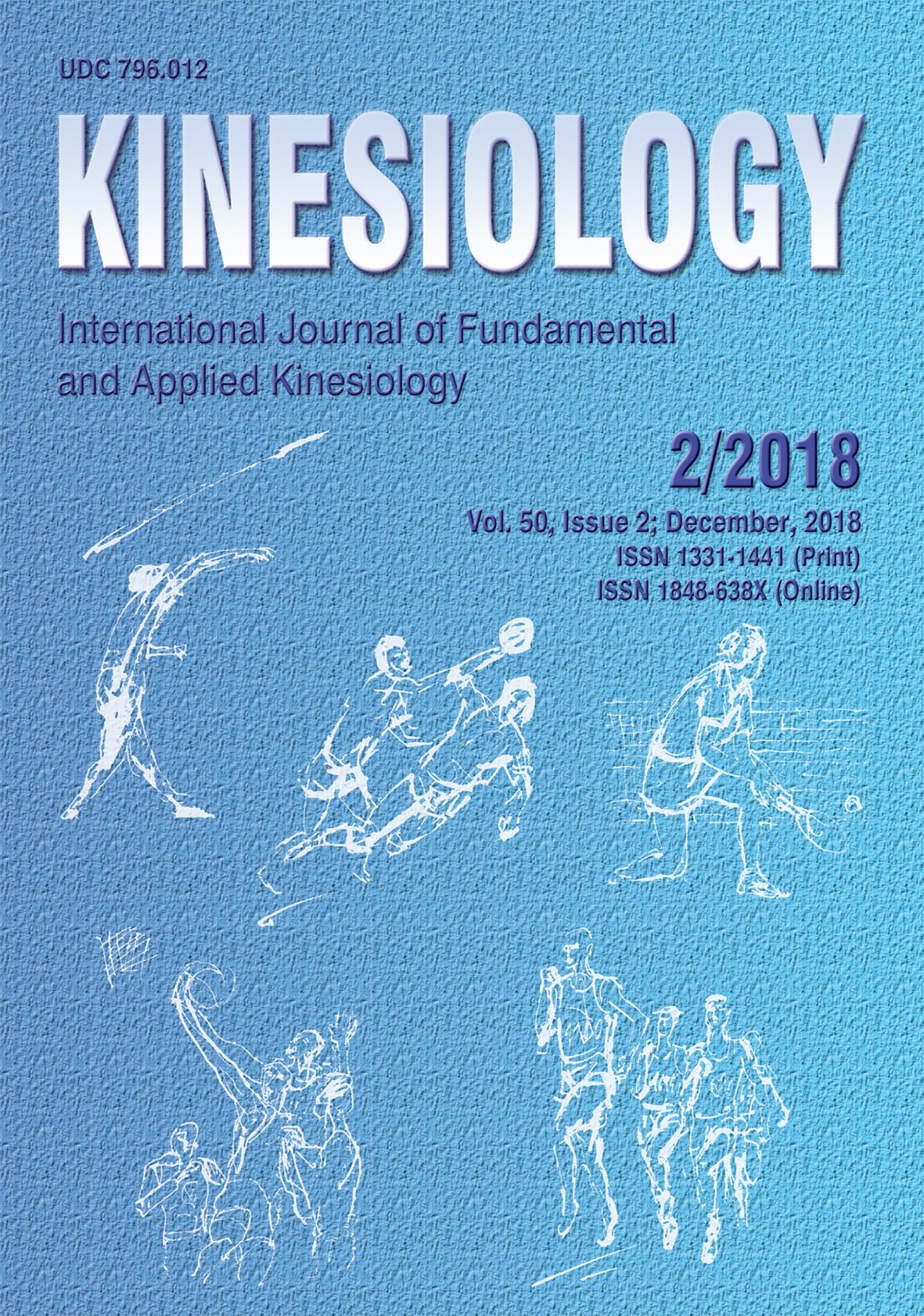COMPARING EXTERNAL TOTAL LOAD, ACCELERATION AND DECELERATION OUTPUTS IN ELITE BASKETBALL PLAYERS ACROSS POSITIONS DURING MATCH PLAY
Abstract
The aim of this study was to compare external load, calculated by an accelerometer training load model, the number and intensity of accelerations and decelerations and the acceleration:deceleration ratio between playing positions during basketball matches. Twelve elite male basketball players (mean±SD, age: 25.5±5.2 years (range: 19-36 years); 201.4±8.6 cm; body mass: 98.4±12.6 kg) were monitored during two official matches. An accelerometer training load model and the number of accelerations and decelerations were used to assess the physical demands. Magnitude-based inferences and effect sizes (ES) were used to assess possible differences between positions: Point Guards (PG), Shooting Guards (SG), Small Forwards (SF), Power Forwards (PF) and Centers (C). Elite basketball players in all positions presented higher maximal decelerations than accelerations (ES=2.70 to 6.87) whereas the number of accelerations at moderate intensities was higher than deceleration (ES=0.54 to 3.12). Furthermore, the acceleration:deceleration ratio (>3 m∙s-2) was significantly lower in players on the perimeter (PG and SG) than in PF and C (ES=1.03 to 2.21). Finally, PF had the lowest total external load (ES=0.67 to 1.18). These data allow us to have a greater knowledge of the external demands in matches and this information could be used in the planning of training programs.
Downloads
Published
How to Cite
Issue
Section
License
Copyright (c) 2018 Kinesiology

This work is licensed under a Creative Commons Attribution-NonCommercial 4.0 International License.
At Faculty of Kinesiology we recognize that access to quality research is vital to the scientific community and beyond. Kinesiology is non-profit journal and all costs of publishing and peer review process are covered by the publisher itself or other funding sources like Ministry of Science and Education of the Republic of Croatia. Full text papers are also available free of charge at http://hrcak.srce.hr/kineziologija. There are no restrictions on self archiving of any form of paper (preprint, postprint and publisher's version).
Articles are distributed under the terms of the CC BY - NC 4.0
Kinesiology does not charge any fees to authors to submit or publish articles in our journal.


